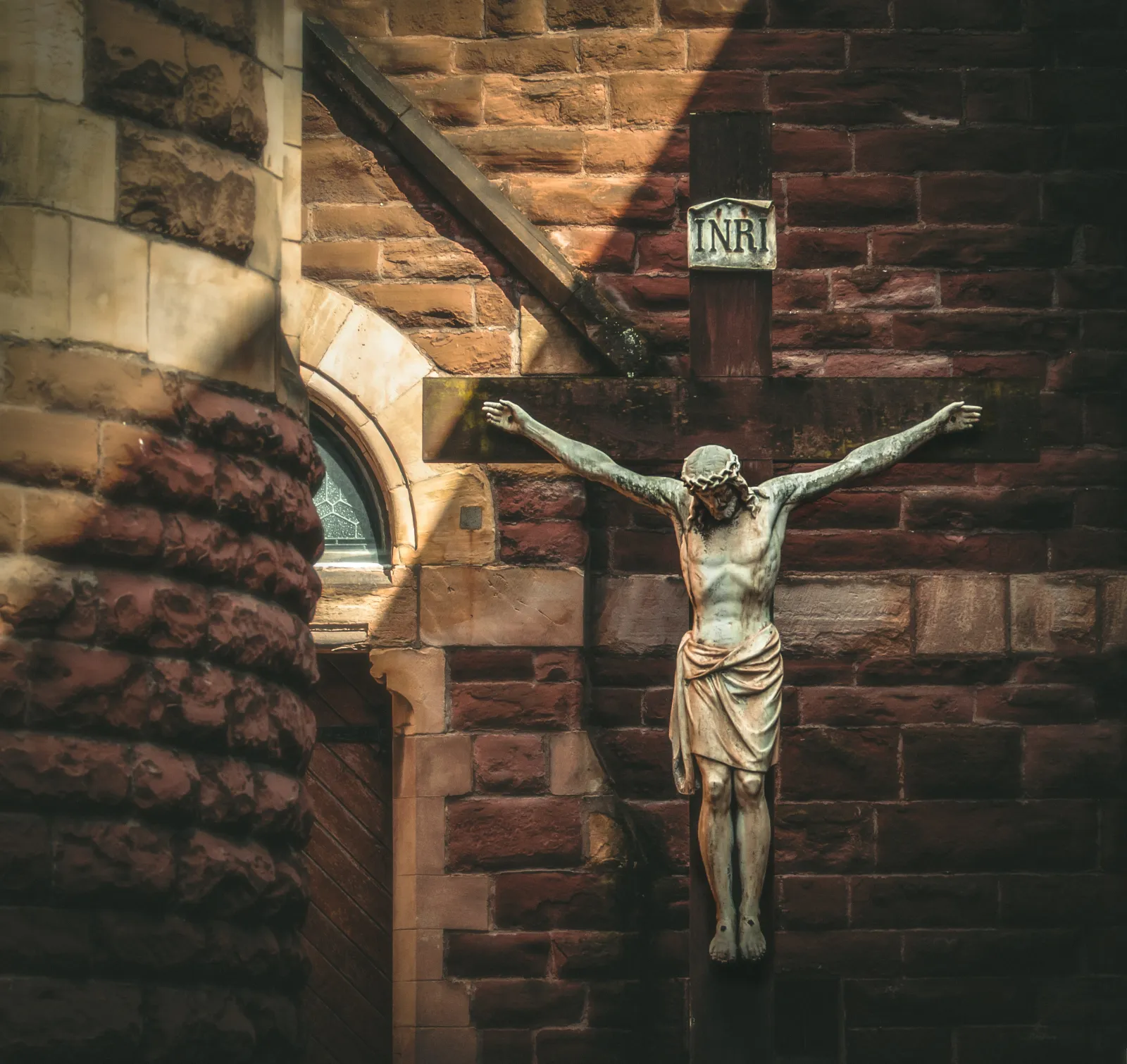How to identify and interpret the statues, carvings and engravings decorating a catholic cemetery.
Cemeteries are beautiful and spiritual spaces filled with gravestone symbolism. Elegant grave markers, iconic statues and finely carved gravestone decoration in a Catholic cemetery not only look graceful and timeless, they often have deep spiritual meaning. While some traditional Catholic symbols are easy to identify, visitors may be surprised at the wide variety of symbolism found in a Catholic cemetery. When visiting the gravesite of a loved one, look for these distinct designs and know what they represent.

The Cross: The most common and well-known Catholic cemetery symbol is the Holy Cross. The cross appears in a variety of cemetery art and gravestone ornamentation. And the Catholic symbolism of the cross can encompass a wide assortment of meaning, from representing Christ's resurrection to simply identifying the deceased as a Christian.
Greek letters on the cross: You may notice the letters "IHS" engraved on the cross. The gravestone symbolism of these three letters refer to the Greek letters iota, eta and sigma -- the first three letters of Christ's name in Greek. The Greek letters Alpha and Omega can also appear on a gravestone to symbolize the beginning and the end.
Triangles, three-leaf clovers and trinity knots: A three-pointed shape often denotes the holy trinity -- God, the Son and The Holy Spirit. These symbols can be a simple triangle or even just the number three. Or, they can be more complex and intricate carvings of an overlapping trinity knot. Three-leaf clovers represent the holy trinity, and can also be used to identify those of Irish descent. Three-sided shapes and designs are often more subtle and harder to spot examples Catholic symbolism.
Anchor: While the obvious symbolism of an anchor points to the person being a sailor or member of the US Navy, the anchor can also be a hidden symbol of the Holy Cross. Early Christians used the symbol of an anchor as a secret symbol when they were being persecuted by the Romans. Today, it continues to represent Christianity as well as maritime experience.
Broken pillar: While not unique to Catholic cemeteries, a broken pillar represents a life tragically cut short. A full pillar represents someone who has lived a rich and full life.
Winged face (Soul Effigies): A common symbol in older graves is a human face with wings. This is known as a soul effigy and symbolizes the person's ascent into heaven. Soul effigy carvings became popular in the early 18th century as a response to the somewhat grim skull and bones gravestone decorations used by early Puritans. The soul effigies would eventually evolve from carvings of a human face to carvings of a child-like cherub face. And the meaning evolved from representing a deceased person's soul ascending to heaven to a symbol referring to purity and innocence.
Cherubs: The small angelic cherubs in a Catholic cemetery often denote a child's grave. They can also symbolize purity and heavenly grace. Cherubs mentioned in the first book of the Bible are among the highest order of angels and have become one of the most popular and sacred icons of Christianity. They are much more than Cupid without the bow and arrow.

Angels: Most Catholic cemeteries will be home to several statues and carvings of angels. The exact meaning can differ slightly, but angels often represent the ascent into heaven or holy protection. A weeping angle is often used to illustrate a tragic loss.
Doves: The dove is an iconic symbol of the Holy Spirit and peace. While birds in general often represent freedom and passing from one life to the next, doves in particular hold special religious meaning as mentioned in the Book of Genesis during the story of Noah's Ark. In the Bible, the dove is also compared to the Holy Spirit during the baptism of Jesus in the books of Matthew and Luke. Beyond Catholic symbolism, dove iconography is used by many organizations and governments to represent peace.
Uncover the Secret Beauty of a Catholic Cemetery
These popular symbols can
be found throughout most Catholic cemeteries. Gravestone symbolism silently
illustrates complex emotions and faith. Knowing how to interpret different
cemetery markings and Catholic symbols turns a visit to the gravesite into a respectful
trip through a religious art gallery. When words fail to deliver the right
message, beautiful engravings, sculptures and stone work offer far greater
meaning.
For more information on Catholic cemeteries and funeral ceremonies,
please contact 844-808-3310.

